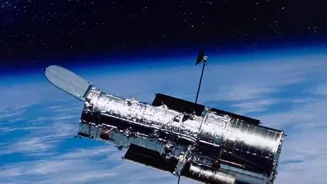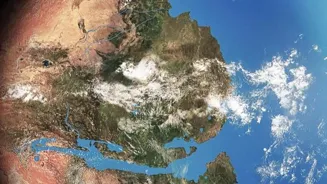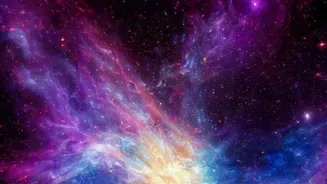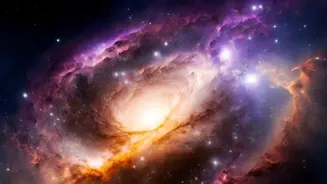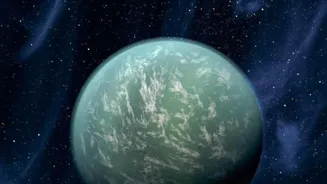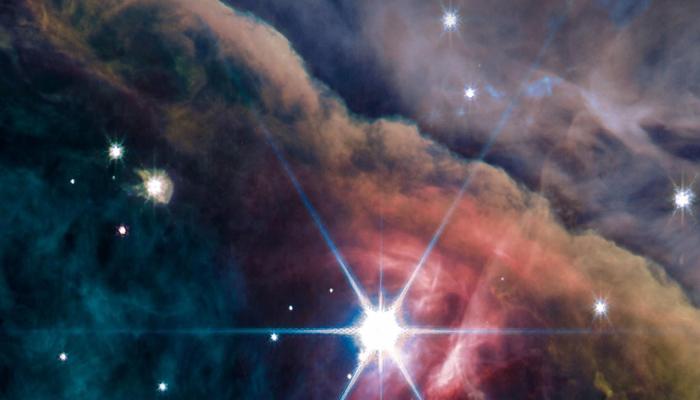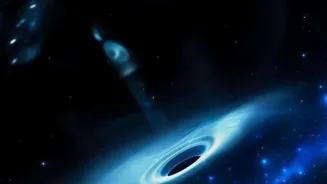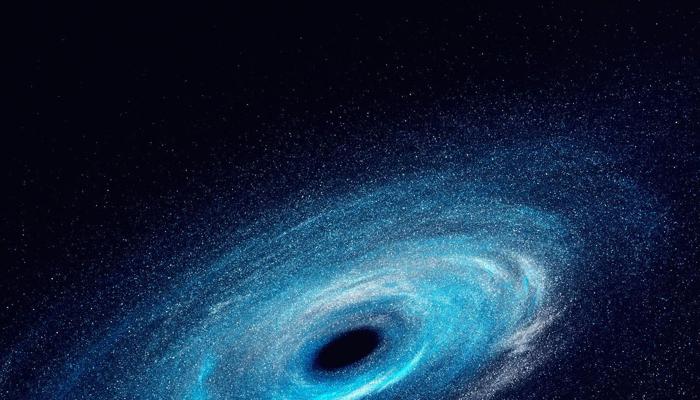Unveiling Cosmic Marvels: Dive into the Fascinating Discoveries of the Hubble Telescope! Explore 10 breathtaking cosmic revelations
For over three decades, the Hubble Space Telescope has been our eye in
the sky, peering into the deepest reaches of the universe and sending back images that have captivated scientists and the public alike.
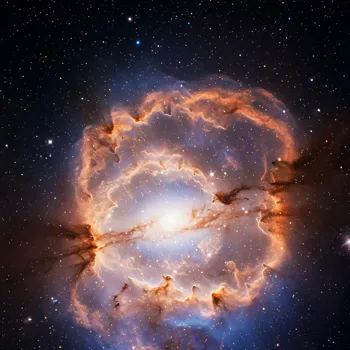
Orbiting Earth, far above the distorting effects of our atmosphere, Hubble has unveiled cosmic secrets and revolutionized our understanding of the cosmos. From confirming the age of the universe to capturing stunning images of nebulas, its discoveries have been nothing short of incredible.
Let's take a look at ten of the most remarkable discoveries made possible by this iconic telescope.
Hubble's observations refined universe's age to 13.8 billion years
Hubble's observations have been instrumental in refining our estimate of the universe's age.
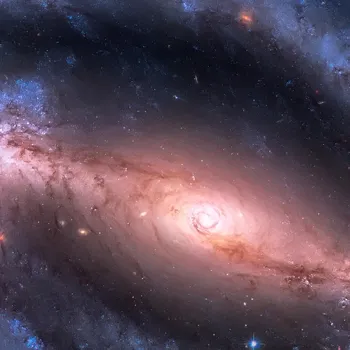
By precisely measuring the distances to faraway galaxies and observing the rate at which the universe is expanding, known as the Hubble Constant, scientists were able to calculate when the universe originated. The figure arrived at, around 13.
8 billion years, has been corroborated by other independent measurements, making it one of the cornerstones of modern cosmology. Before Hubble, the estimated range for the age of the universe was quite wide, leaving much room for uncertainty. The telescope provided a much-needed anchor point.
One crucial aspect of this process was the study of Cepheid variable stars. These stars pulsate in a predictable way, making them excellent distance indicators – the brighter they are, the farther away they are.
Hubble's ability to clearly observe these stars in distant galaxies provided a foundation for a more accurate calculation of the Hubble Constant, revealing a more precise age of the cosmos.
Hubble telescope reveals supermassive black holes in galaxies
Hubble didn't just refine existing knowledge; it also opened our eyes to entirely new phenomena in the universe. One such discovery was the presence of supermassive black holes at the centers of most galaxies.
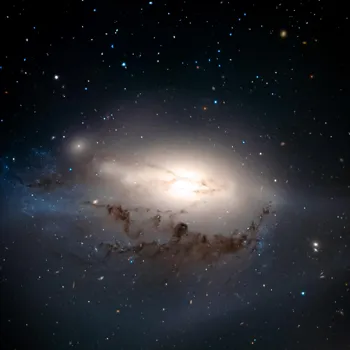
While the existence of black holes had been theorized for decades, Hubble provided direct observational evidence of them.
By carefully measuring the speeds of gas and stars orbiting galactic centers, scientists could infer the presence of incredibly massive, yet invisible, objects pulling everything around them.
These observations confirmed the long-held suspicion that supermassive black holes are not an anomaly but a common feature of galaxies across the cosmos.
The telescope’s high resolution was essential for making these precise measurements because from Earth, atmospheric blurring makes it exceedingly difficult to resolve the motion of objects close to the galactic centers.
Thus, these finding became a central tenet in our picture of galactic evolution, influencing how we understand galaxies form and interact.
Hubble's iconic images of Eagle Nebula's Pillars revolutionize star formation studies
The Eagle Nebula, including the iconic "Pillars of Creation," is one of Hubble's most famous subjects. These images revealed towering columns of gas and dust where new stars are being born.
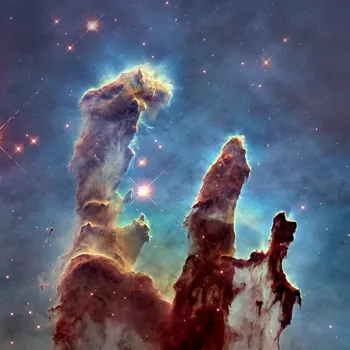
These breathtaking views not only provided a glimpse into the stellar nurseries of our universe but also provided valuable insights into the processes of star formation. Hubble's observations showed that these pillars were being sculpted by powerful radiation from nearby hot, young stars.
The images were released to the public and quickly became iconic representations of space. The details revealed by Hubble allowed scientists to study the densities and temperatures of the gas and dust, enabling them to understand the evolution of these pillars.
This has revolutionized star formation studies, offering a detailed look at the interactions between stars and their environment.
Hubble's ability to capture the structure of these pillars in such great detail makes it possible to study the processes involved, revealing the intricate dance between creation and destruction that characterizes the cosmos.
Hubble studies exoplanet atmospheres, revealing key compositions for potential habitability
Hubble has played a vital role in the study of exoplanets, planets orbiting stars other than our Sun. While it cannot directly image most exoplanets due to their size and distance, Hubble has been instrumental in characterizing their atmospheres.
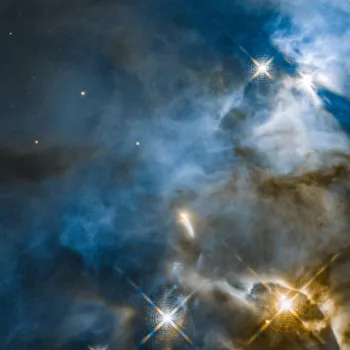
By analyzing the light from a star as it passes through the atmosphere of an exoplanet during a transit, astronomers can identify the elements present in that atmosphere.
Hubble has discovered the presence of water vapor, methane, and other molecules in the atmospheres of several exoplanets, offering crucial clues about their composition and potential habitability.
These observations have paved the way for future telescopes, such as the James Webb Space Telescope, designed specifically to search for signs of life on exoplanets.
Hubble's exoplanet atmospheric studies are some of the telescope's most important contributions, revealing the atmospheres of faraway worlds.
Hubble's evidence supports dark energy causing universe expansion
Hubble provided critical evidence supporting the existence of dark energy, a mysterious force causing the universe to expand at an accelerated rate.
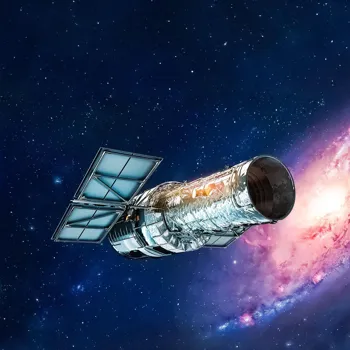
By studying distant supernovae, exploding stars that emit a predictable amount of light, astronomers were able to measure distances across the universe. These observations revealed that the expansion of the universe was not slowing down, as previously thought, but was speeding up.
This discovery suggested that some unknown force, dubbed dark energy, was counteracting gravity. Determining the nature of dark energy remains one of the biggest challenges in modern cosmology.
Before Hubble, the study of distant supernovae was limited, but the telescope's observations made it possible to pinpoint distances and expansion rates for some of the most distant objects in the visible universe.
These measurements provided compelling evidence for the existence of dynamic accelerating expansion.
Hubble's observations reveal galaxy evolution through mergers and collisions
Hubble's advanced imaging and spectroscopic capabilities made great observations of the evolution of galaxies. From its observations, we understand how galaxies merge, collide, and transform over billions of years.
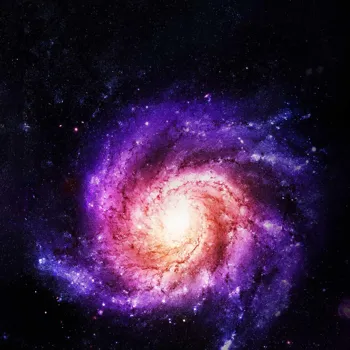
By studying the structures, shapes, and compositions of galaxies at different distances, which provides a view of the universe at varying points in the past, astronomers can piece together stories on how galaxies have changed over time.
One key finding was the discovery of galactic mergers, the collisions of two or more galaxies over millions or billions of years. These collisions tend to reshape galaxies, triggering bursts of star formation and leading to elliptical galaxies.
One of the best examples of this phenomenon is seen in many interacting galaxies, showing that tidal forces and galactic encounters are a main part of galaxy evolution. Hubble allows observing the final stages of galaxy merging in detail.
